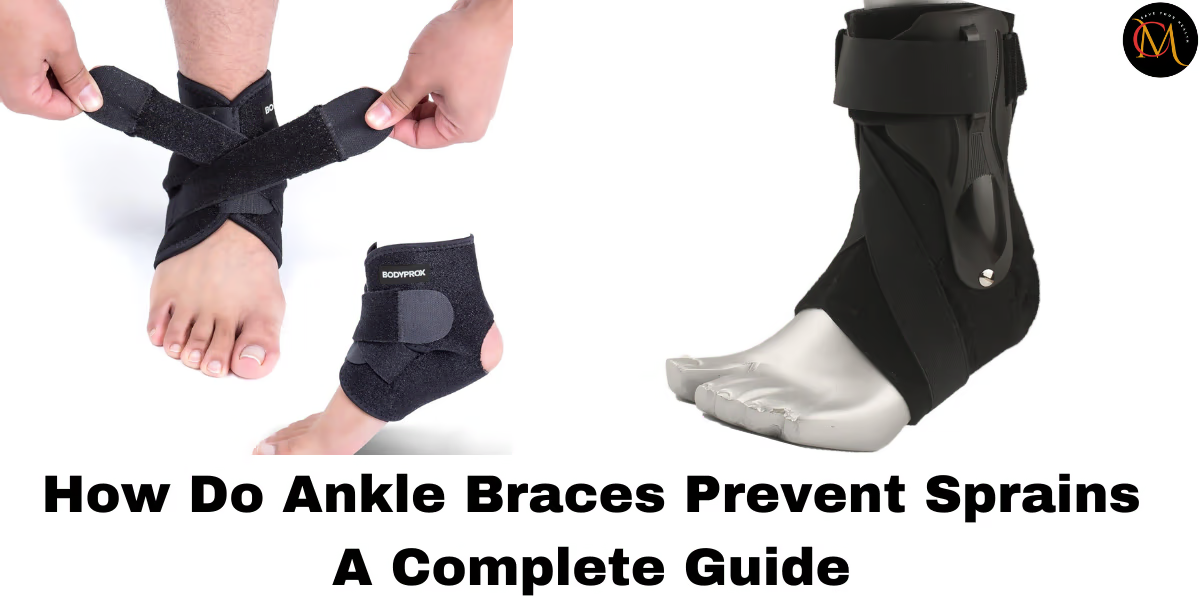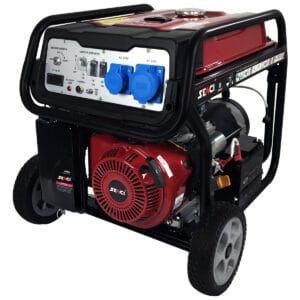
When it comes to sports injuries and everyday accidents, ankle sprains are frustratingly common. But what quite happens when you sprain your ankle? Let’s break it down in simple terms. An ankle sprain occurs when the ligaments that hold your ankle bones together stretch or tear, usually due to a sudden twisting motion. In this article, we deeply see how ankle braces help to cover our ankles.
Common Causes of Ankle Sprains
You might be surprised to learn that something as simple as walking on uneven ground can lead to an ankle sprain. Common scenarios include landing awkwardly after jumping, stepping on someone else’s foot during a basketball game, or even missing a step while walking downstairs. These everyday situations can quickly turn into painful experiences without proper protection.
Risk Factors for Ankle Injuries
Some people are more susceptible to ankle sprains than others. Past injuries, poor balance, weak ankle muscles, and certain anatomical factors can all increase your risk. If you are an athlete or someone who is experienced previous ankle injuries, you’re probably nodding your head right now.
The Science Behind Ankle Braces
Have you ever wondered how a simple piece of supportive equipment can make such a big difference? Ankle braces work through a combination of mechanical support and proprioceptive enhancement fancy terms that we’ll break down for you.
Types of Ankle Braces
Let’s explore the various types of ankle braces available:
- Lace-up braces: Think of these as reinforced socks with extra support
- Rigid braces: These provide maximum stability with plastic or metal components
- Stirrup braces: Offering side support while allowing up-and-down movement
- Compression sleeves: The lightweight option for mild support
Materials and Design Features
Modern ankle braces are engineering marvels, combining lightweight materials like neoprene, nylon, and breathable mesh with strategic reinforcement points. The design often includes straps that mimic your ankle’s natural ligaments pretty clever, right?
How do Ankle Braces help?
Ankle braces are often used in the realm of sports medicine as a prophylactic measure to mitigate the risk of ankle sprain injuries. Particularly in high-risk sports such as soccer and volleyball, the incidence of lateral ankle sprains is notably prevalent, primarily due to the nature of movements that involve inversion of the foot. Ankle braces, including lace-up ankle supports and semi-rigid models, can help enhance stability by providing external support to the lateral aspect of the ankle, thereby assisting in the prevention of ankle injuries.
Furthermore, the application of ankle-taping techniques has been shown to complement the use of ankle braces, offering additional reinforcement to individuals with a history of chronic ankle instability. The combination of these interventions can significantly help prevent further injury, making them invaluable for athletes prone to common injuries associated with the ankle. Consequently, implementing a comprehensive approach that includes both ankle braces and taping can effectively reduce the risk of future injuries in competitive sports settings.
Mechanism of Protection
Proprioception Enhancement
Here’s something fascinating: ankle braces don’t just provide physical support they actually help your brain! By increasing awareness of your ankle’s position (proprioception), they help you react faster to potential injury situations. It’s like having a sixth sense for your ankle position.
Range of Motion Control
Think of an ankle brace as a protective fence around your ankle’s movement. It allows safe movement while preventing your ankle from rolling too far in potentially dangerous directions. This controlled freedom is key to preventing sprains while maintaining performance.
Compression Benefits
The gentle squeeze from an ankle brace isn’t just comfortable – it serves multiple purposes. Compression reduces swelling, improves blood flow, and provides that feeling of stability that athletes love. It’s like giving your ankle a supportive hug!
Benefits of Wearing Ankle Braces
Injury Prevention
Research shows that wearing ankle braces can significantly reduce the risk of sprains, especially in high-risk sports. They are particularly effective for athletes with a history of ankle injuries think of them as insurance for your ankles.
Performance Enhancement
Contrary to what you might think a properly fitted ankle brace should not hinder your performance. Many athletes report feeling more confident and able to focus on their game when wearing ankle support. It’s amazing how peace of mind can improve performance!
Rehabilitation Support
After an injury, ankle braces become your best friend during the recovery process. They provide graduated support as you heal, allowing you to return to activity safely and confidently.
Why are Ankle Braces Good
Utilizing ankle braces can significantly enhance the stability of the foot and ankle, particularly in individuals engaged in high-impact sports or activities. These devices serve as an effective measure to prevent ankle injuries, which are notably prevalent among athletes. By providing support, a brace can help mitigate the risk of sprains and strains during physical exertion.
Additionally, while ankle taping has been a traditional approach to injury prevention, the benefits of braces include ease of application and consistent support. The increasing awareness of the need for protective measures in sports has led to a growing acceptance of ankle braces in both recreational and professional settings. In this context, the use of such devices aligns with contemporary practices in sports medicine (med) aimed at reducing injury prevalence.
Choosing the Right Ankle Brace
Activity Type
Different activities require different levels of support. A basketball player might need more rigid support than a jogger. Consider your activity level and risk factors when choosing a brace.
Injury History
Your past experiences with ankle injuries should guide your choice. Those with multiple previous sprains might benefit from more substantial support than someone using a brace purely for prevention.
Comfort and Fit
A brace is only effective if you wear it consistently, so comfort is crucial. Look for one that fits well with your shoes and doesn’t cause discomfort during your typical activities.
Best Practices for Using Ankle Braces
Proper Application
The effectiveness of an ankle brace largely depends on proper application. Make sure to follow the manufacturer’s instructions carefully. A properly applied brace should feel snug but not tight enough to restrict blood flow.
Maintenance and Care
To extend the life of your ankle brace and ensure optimal performance, regular cleaning and proper storage are essential. Check for signs of wear and replace your brace when it loses its supportive properties.
Conclusion
Ankle braces are powerful tools in preventing sprains and supporting athletic performance. By understanding how they work and choosing the right one for your needs, you can significantly reduce your risk of ankle injuries. Remember, while ankle braces provide excellent protection, they work best as part of a comprehensive approach to ankle health that includes proper conditioning and technique.
FAQs
How long should I wear an ankle brace during recovery?
Every injury is different, but typically, you should follow your healthcare provider’s guidance. Generally, severe sprains may require 4-6 weeks of brace support.
Can wearing an ankle brace weaken my ankle?
No, when used properly, ankle braces don’t weaken your ankle. However, it’s important to maintain strength training exercises even while using a brace.
Should I wear an ankle brace on both ankles for prevention?
If you have no history of injury, wearing braces on both ankles for prevention is usually unnecessary unless you’re participating in high-risk activities.
Can I sleep with my ankle brace on?
Generally, it’s not recommended to sleep with an ankle brace unless specifically instructed by your healthcare provider, as your ankle needs time to breathe.
How often should I replace my ankle brace?
With regular use, ankle braces typically need replacement every 4-6 months, or sooner if you notice decreased support or visible wear and tear.





